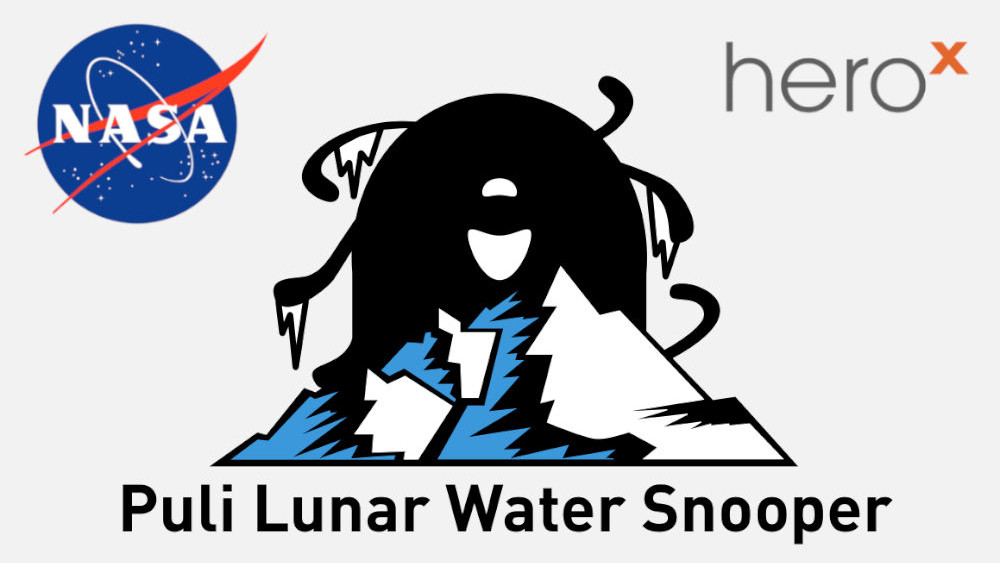NASA to support cutting-edge Hungarian development – PHOTOS
The Puli is probably one of the most well-known and intelligent Hungarian dog breeds, but it is also the name of a Hungarian space project, the Puli Space Technologies, and they have managed to achieve what only a few could. Since their foundation, the Puli Space Project has performed well in several international competitions and recently achieved first place in NASA’s “Honey, I shrunk the NASA payload” challenge.
According to 24, the challenge of the NASA Jet Propulsion Laboratory’s “Honey, I shrunk the NASA payload” was to design easily realisable, small-scale, and light-weight lunar measuring and monitoring devices that could be deployed on small robots the size of a shoebox. To take on this challenge, Puli Space Technologies developed a device that could help detect water ice on the Moon.
Puli Space Technologies’ Puli Lunar Water Snooper won first place in the category of Lunar Resource Potential and was awarded $30,000 for their idea and hard work.

This is not everything, however, as in the second instalment of the challenge, creatively named “Honey, I Shrunk the NASA Payload Challenge, the Sequel”,
the relatively small group of Hungarian scientists and engineers received a whopping $225,000 budget and direct support from NASA
by reviewing the team project and providing insight or expertise if needed. NASA ended up increasing the prize pool by and additional $65,000 to support a fourth project.
Only the winners of the first challenge could partake in the second competition and, in the end, ten teams submitted their detailed project plan, including estimated budget costs, milestones, real-life tests, and risk assessment. The four winners have 12 months to execute their project plans, and they must deliver at least three identical and operational working prototypes.
“We have received tremendous recognition from the world’s leading space agency; we are very happy and proud. We have achieved this with incredible collective effort, and after ten years of struggling, we feel we deserve the success,” said Tibor Pacher, CEO and Founder of Puli Space Technologies.
He is happy that they have managed to win over excellent domestic partners and that they have a strong team to take on the task. He believes that by working together, Hungary could join the very narrow group of countries that have reached a celestial body. He also quoted “the Greatest Hungarian”, István Széchenyi: “Egynek minden nehéz, soknak semmi sem lehetetlen” (Everything is difficult for one, nothing is impossible for many).
After the recent success of the Chinese Chang’e-5 lunar expedition, in addition to Indian, Russian, and Japanese expeditions, NASA’s CLPS (Commercial Lunar Payload Services) program will bring landing units developed by private companies onto Earth’s celestial companion. The probes of Intuitive Machines and Astrobotic in 2021 – the latter of which will transport the device of Puli Space Technologies carrying an aluminium “Spacetime plaque” with messages from the supporters of Puli Space Technologies –, Masten Systems in 2022, and Astrobotic again in 2023 will help bring NASA equipment and small instruments and devices to the Moon, among other things.
The task of such expeditions is to map lunar resources and explore their potential for utilisation. This is called ISRU principle, meaning the use of resources available on site. (ISRU stands for In Situ Resource Utilisation). On the Moon, water is the number one candidate for ISRU opportunities, or more precisely, water ice. In the future, Moon settlers could utilise it as a water supply, but it could also serve as rocket fuel, as electrolysis can produce hydrogen and oxygen.
According to the latest research, there is 40,000 km2 worth of potential ice deposits. Exploring them is of paramount importance. Here enters the Puli Lunar Water Snooper (PLWS), the latest Hungarian development that uses CMOS image sensors in a special way to measure cosmic radiation and to count the number of neutrons of different levels of energy coming from the soil of the Moon. This way,
it is able to identify hydrogen (water ice) and measure the amount of it in the soil. Moreover, the PLWS is very compact and can be mounted on the underside of moon rovers of only 2 kg in size,
making it cost-effective to launch. In the near future, we will be able to create detailed water ice maps of the Moon thanks to the sniffing of a dog which will not bark at but BE on the Moon.

Read alsoHungary poised to become key player in intl space industry

Read alsoHungary’s contribution to the exploration of space
Featured image: pulispace.com
Source: Szeretlekmagyarország.hu, Pulispace.com, Herox.com
please make a donation here
Hot news
Chinese could emerge around Paks II construction in Hungary
Tourist-favourite Budapest chairlift to finally open this weekend! – PRICES
Trump: Hungarians fight to save Western civilisation
Great news: World’s first retail chain opens new store at Budapest Airport
Hungarian government hopes for a conservative turn in Europe and the US
Trump: Can’t wait to work with Viktor Orbán again as President! – VIDEO













1 Comment
We need William Shatner back as a Mascot for Hungarian Space Explorations !! Kirk out !!